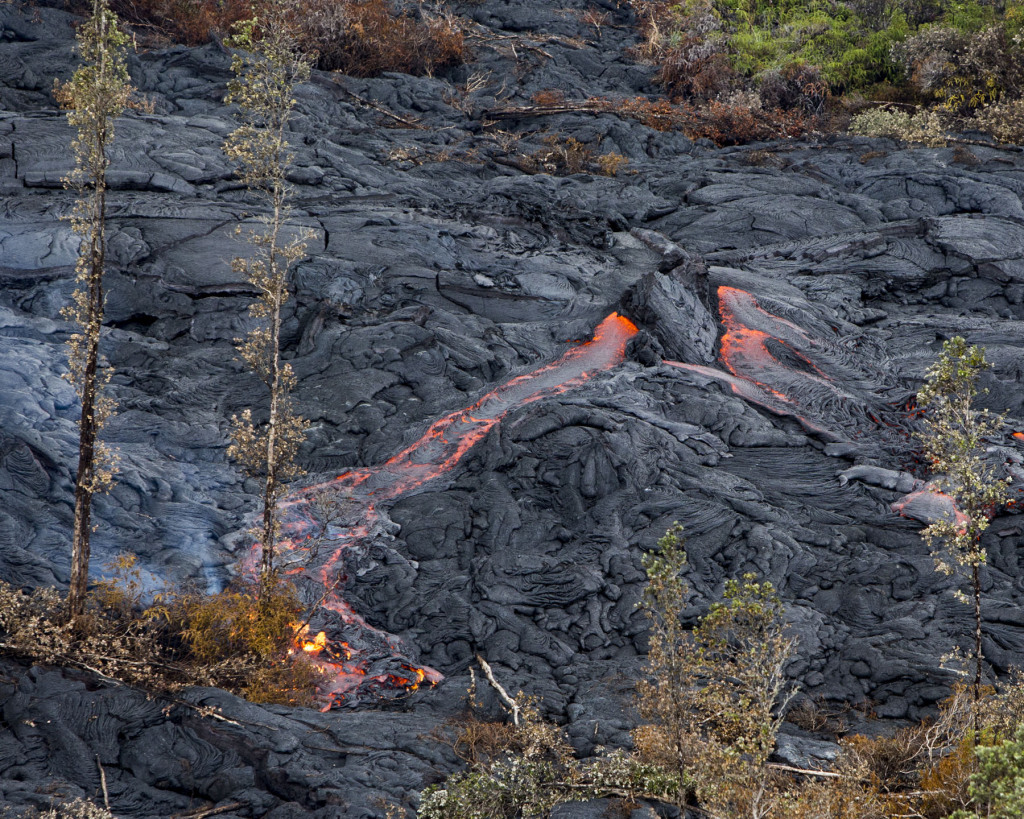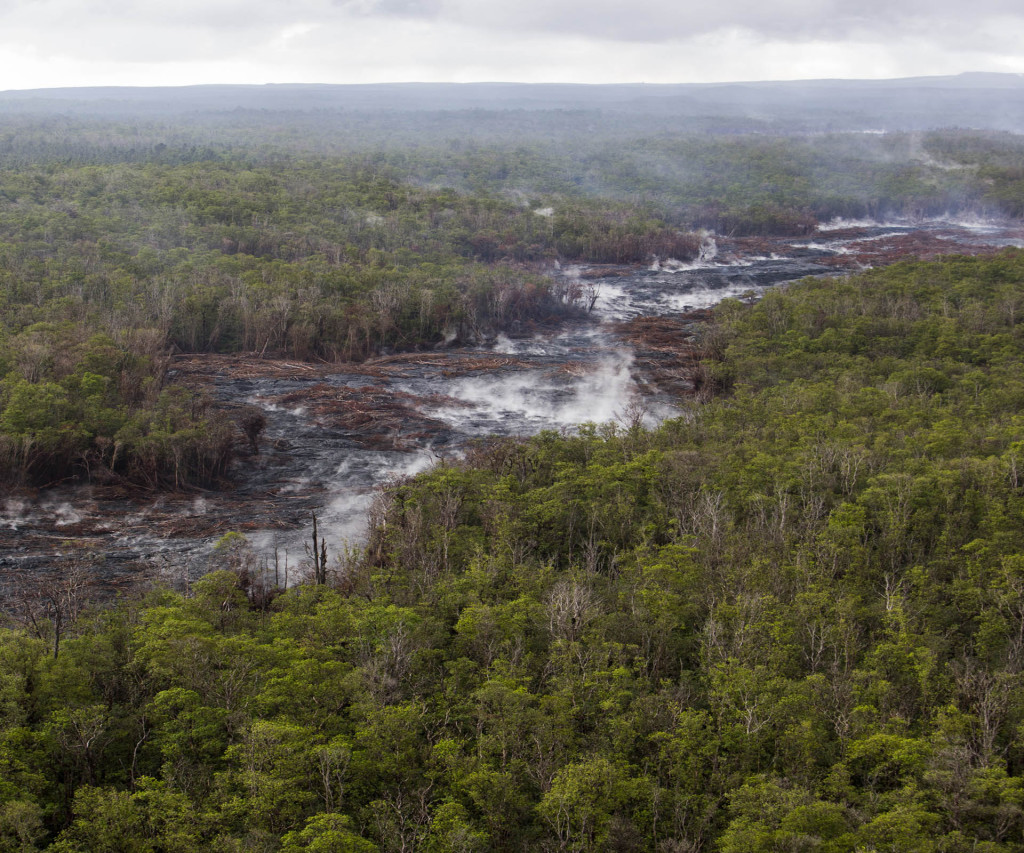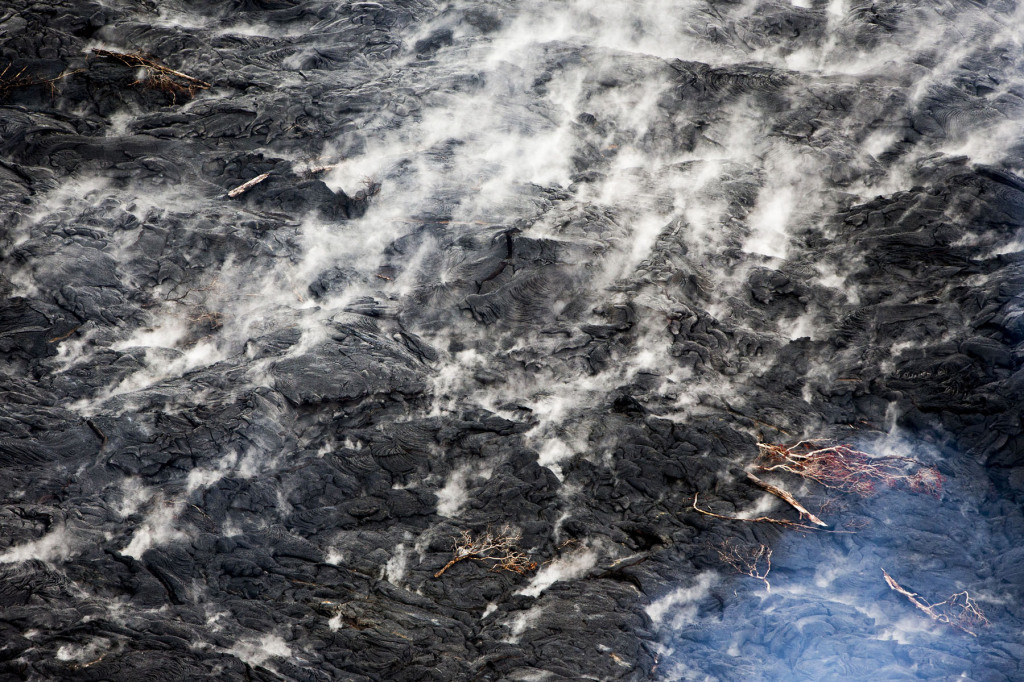“When I first arrived, I saw black smoke billowing not so far in the distance – the lava had struck a pile of car tires. When it burns, it’s quite amazing. It’s mesmerizing,” I was quoted saying during an interview with Reuters News Service on their photo blog. Reuters sent me to cover the impeding doom facing Pahoa Village on the Big Island last week as lava from Kilauea Volcano threatens to split the rural town in two. A recent lava flow has made its way down the volcano’s slope directly towards the middle of town. Many residents are able to do nothing as lava stops for no one.
The blog continues with my story: “Lava is unpredictable. It could go left or right, up or down. It will move 5 meters in an hour, then not move at all. And it usually moves slowly, like squeezing toothpaste down a hill – but it will get there eventually. Unlike a tsunami or an earthquake or even a hurricane, it’s a painfully slow death.”
And clearly residents are anxiously waiting for Pele, the Hawaiian Goddess of the volcano, to cast her judgement on the land of Puna.
For hundreds of thousands of years, lava has erupted on the Big Island helping make the island the biggest of the Hawaiian chain. The volcanoes have not been silence since they formed the Big Island. Since 1983, lava has flowed from Kilauea and the USGS has reported Kilauea is responsible for creating more than 500 acres of new land. “The Lava flows had also destroyed 214 structures, and resurfaced 14.3 km (8.9 mi) of highway, burying them with as much as 35 m (115 ft) of lava.”
Luckily for the town, the lava has currently stalled but the threat still remains and nothing can predict whether the lava will stop or continue. But if Kilauea’s past is a sign of the future, the lava will not cease and will enviably destroy much of the town of Pahoa along with everything else in the flow’s path.
While on assignment, Reuters was granted permission to fly over the flow so we hired a helicopter to get a better view of the flow’s destruction. Luka, who works for Hawaii Volcanoes Helicopter Tours, piloted the tiny little chopper and ferried me over the lava’s path. Very little compares to lifting off in a helicopter, especially one with no doors. Luka’s chopper was the size of a Prius and as we left the ground, it seemed we stood still and everything fell below us.
Luka took me over the town and up the trail to the Pu’u O’o vent where the lava is oozing slowly down the mountain. The aerial photos were noticed by Reuters’s London office and Karolina Tagaris called me and had a quick chat with me about my experiences with this natural disaster. You can see the blog here as well as a write up by the BBC’s News in Pictures site as well. The interview became roughly my story without much of her input.
I continued, “I asked the pilot to follow the path of the lava back to the crater and it was quite amazing to watch the lava flow. There’s a lot of steam and smoke and you can see some lava being created inside the crater, which looks like a bubbling cauldron. It’s so primitive it’s almost as if the world is being created – I found myself looking for dinosaurs!”
There’s nothing that really compares to seeing lava on the Big Island. I’ve tried my best to document what’s going on with the volcano over the years I’ve lived in Hawaii. I’m not a lava photographer as I don’t care to hike out miles in the middle of the night to see nature at it’s best but there are times like this when I have access to fly over it…nothing can really match it.


